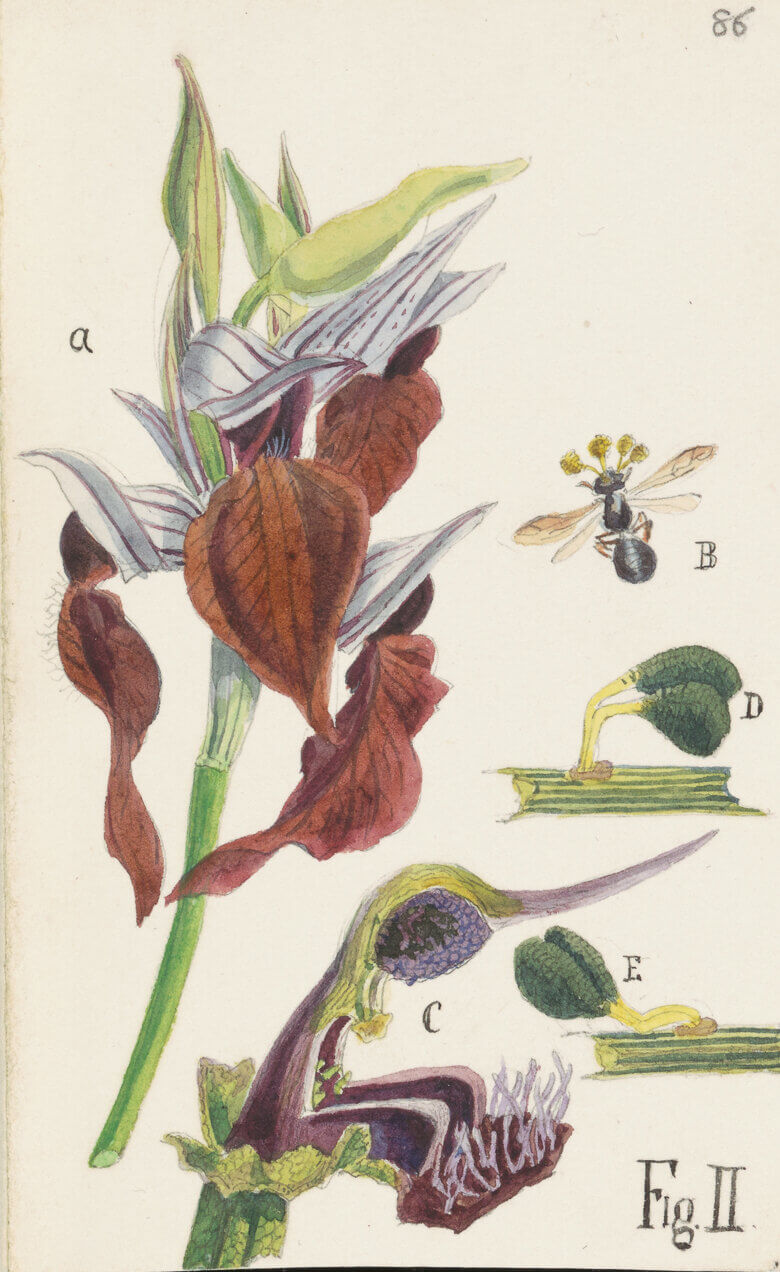Explore 19th c. scientific correspondence
Ɛpsilon is recreating the complex web of correspondence networks that sustained scientific development in the long 19th century.
This is a work in progress. Please join us.
What is Ɛpsilon?

Serapias cordigera and insect pollinator. Pencil and watercolour sketch sent to Charles Darwin by John Traherne Moggridge, 1864. Cambridge University Library, MS DAR 70, f. 86r. Reproduced by permission of the Syndics of Cambridge University Library
Ɛpsilon opens up new research opportunities in the history of 19th century science by bringing correspondence data and transcriptions from multiple sources into a single cross-searchable digital platform. It currently holds details of over 50,000 letters and is growing. Correspondence from this period is scattered, with even major collections rarely catalogued to item level, making it difficult for researchers to exploit. Editions of letters, whether in print or online, tend to focus on those who were prominent at the time. By disaggregating the collections and enabling researchers to rebuild them in new ways, Ɛpsilon doesn’t just put the work of people like Ampère, Darwin, Faraday, Tyndall and Wallace, in a wider context, but allows us to switch the perspective to that of less known figures, to trace multi-dimensional conversations, and track the flow of ideas.
Who are we?
Ɛpsilon is being developed by Cambridge University Library's Darwin Correspondence Project in partnership with Cambridge University’s Digital Library, other editorial projects, individual scholars, and repositories. Contact details for individual contributors are on the introductory pages for each collection. Funding is available to secure its long-term future.